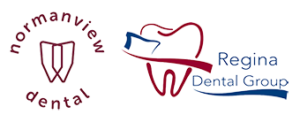How To Conduct An Oral Cancer Self-Exam
Every year in April, Oral Cancer Awareness Month helps bring attention to the disease and highlights the importance of regular oral cancer screenings. Although it is recommended that your visit your dental team regularly for in-clinic exams, at-home oral cancer self-examinations should be conducted monthly. Now that you can’t visit a professional for an exam, we have put together a step-by-step guide for examining your own mouth at home.
You Will Need:
- Hand soap
- Flashlight
- Small mirror
- Piece of gauze
- Wall mirror
Step 1: Wash your hands properly for 20 seconds with hand soap.
Step 2: Check both sides of your face and neck in the mirror, they should look the same.
Step 3: Look for any changes in skin colour, moles that have changed, lumps or sores on your face and neck.
Step 4: Gently feel both sides of your jaw and neck using your fingertips looking for bumps, lumps and sore spots.
Step 5: Place your fingers over your “Adam’s apple” and swallow. It should move up and down, not side to side. Record any hoarseness that lasts longer than two weeks.
Step 6: Remove any orthodontic appliances or dentures from your mouth.
Step 7: Using clean hands, check the inside of your mouth with a clean flashlight and small mirror.
Step 8: Examine the roof of your mouth for changes in colour or lumps. Gently press against the roof of your mouth using your index finger. Record any colour changes or feel.
Step 9: Using your index finger, check the floor of your mouth. Record any colour changes, feel or change in mouth shape.
Step 10: Using a piece of gauze, pull out your tongue. Examine all sides, feel your tongue with clean fingers, and record any colour changes, feel or swelling.
Step 11: Examine your gums. Gently run your index finger over your upper and lower gums. Record any colour changes, bumps, lumps or tenderness that last longer than 14 days.
Step 12: Gently flip your upper lip up and then your lower lip down to check for bumps, lumps or colour changes. Use your index finger and thumb to gently pinch your lips and cheeks. Feel for bumps, lumps or tenderness. Record any loss of feeling, pain or areas that bleed unreasonably.
It’s important to learn to recognize the normal conditions of your own mouth so that you can detect abnormal conditions and report anything unusual to a dental professional or a medical specialist. When detected early, oral cancer has an estimated 80 percent survival rate, so it is important to incorporate the 12-step self-screening process above into your monthly routine. If you record any suspicious abnormalities in your mouth, neck or on your lips, please contact your dental team or medical specialist immediately.
For more information on oral cancer signs and symptoms, risk factors and prevention tips, check out our blog ‘Leading Causes of Oral Cancer’.
If you would like to learn more, please do not hesitate to give us a call or contact us to book an appointment.
